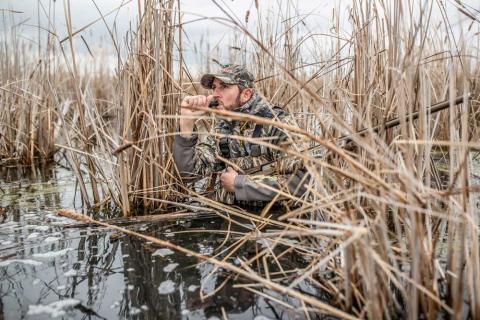Ryan Graves
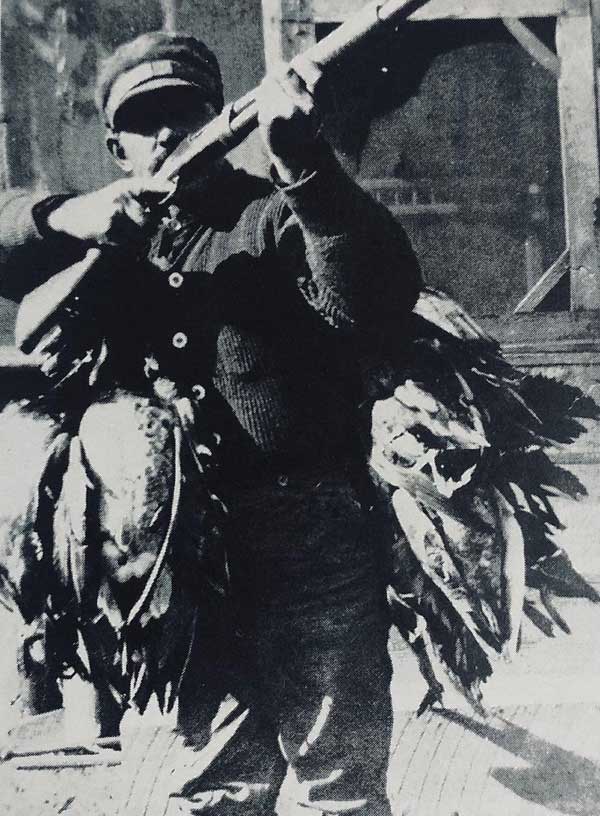
1864-1922
Bucks Point, Arkansas
The devastating earthquakes of 1811-1812 changed the landscapes vastly along the Mississippi River in Missouri, Tennessee, and Arkansas. In northeast Arkansas, the series of quakes altered the drainage pattern of the region and created a 12,000-acre wetland known as Big Lake.
The area consists of mostly a shallow lake, swamp, and hardwood forest. The area became a mecca for wildlife, especially migrating waterfowl. Locals made their living on the lake hunting for the market. After the civil war, railroads were built in the region to be used for the exploitation of lumber but it was also used as a means of transportation for sportsmen and market hunters from St. Louis, Memphis, and Nashville looking to capitalize on the abundant amount of waterfowl in the area.
One such market hunter was James Tillman Beckhart, who would become the father of Arkansas-made duck calls. Beckhart was born in Warsaw, Indiana in 1864. As a young kid, his family moved to Pennsylvania where he lived until 1887. While in Pennsylvania, he married Anna Dorman and their first child, Bertha, was born in 1885. Seeking better opportunities, Beckhart moved his young family to East St. Louis in 1887 and took a job on the railroad. While living in the area, Beckhart began hunting and fishing on the nearby Mississippi River. Waterfowl hunting quickly became something that he was passionate about. At some point in the mid 1890s, Beckhart began to travel to the Big Lake area in northeast Arkansas to hunt. What he saw while there must have really struck a chord, because he packed up his family and moved there in 1897.
After arriving in the Big Lake area, Beckhart settled into Dell, a small community on the southeast side of the lake about 10 miles southwest of Blytheville. While living in Dell, Beckhart became a market hunter and guide for wealthy sports that came to the area.
After a short time in Dell, Beckhart found a houseboat that he could use to house his family and get him even closer to the resource. He moored his new houseboat in Bucks Point on the west side of Big Lake about three miles south of the Missouri border. It didn’t take Beckhart long before he became a local favorite. He would provide locals with fish and fowl before shipping it to the market. His guiding business began to boom as well. So much so, he added four rooms onto his houseboat to accommodate hunters. His wife, Bertha, was the camp cook. The food must’ve been delightful because the houseboat became a gathering place for all the area residents. It was also during these years that Beckhart began carving his duck calls and selling them.
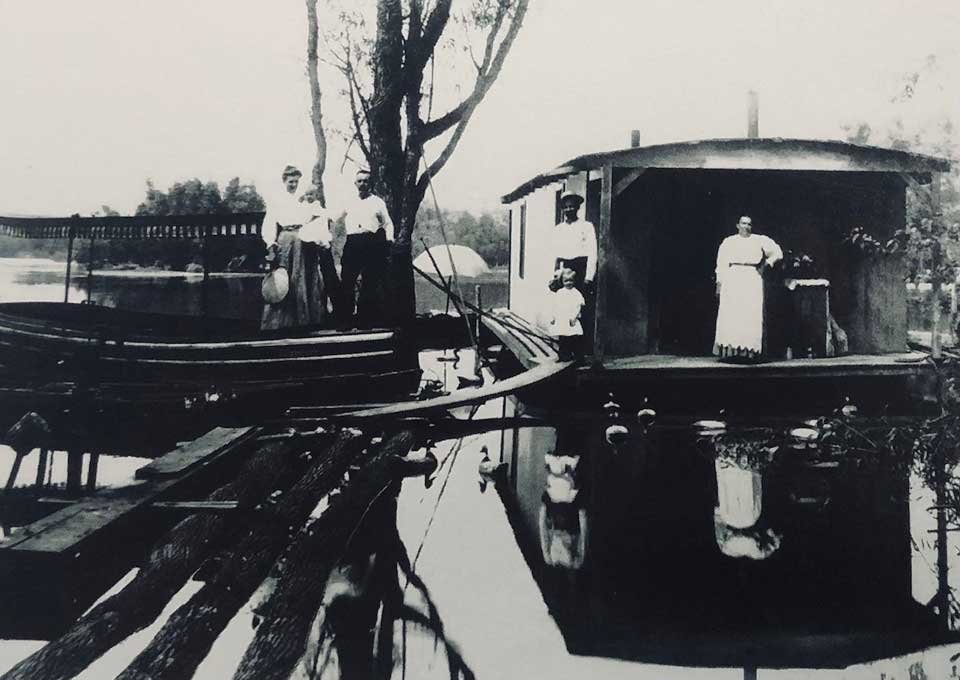
Making duck calls is something that Beckhart enjoyed but he also found it as a means to make supplemental income. The wealthy sports would buy them as a memento of their time spent with him in the field. Beckhart made both smooth barrel and checkered calls. The smooth calls were more than likely made for the locals that actually used them to hunt with and weren’t interested in having anything fancy. It is said that Beckhart charged $2.50 for his smooth calls, $5.00 for checkered, and as much as $35 for his fancy carved calls.
Examples of Beckhart calls have been found with different things carved into the panels that buyers requested such as ducks, fish, shotguns, and a train to name a few. The wealthy clients would stand in line to buy them. His early examples were all hand carved but as the demand for them increased, he had to figure out a way to speed up the call making process. He did so by turning a sewing machine into a lathe.
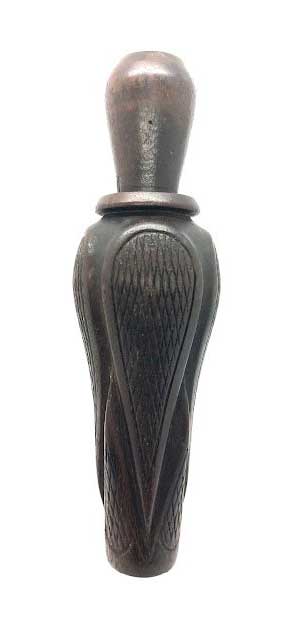
Stamped
His checkered calls each had four checkered panels. Upon completion of each call, Beckhart would soak them in linseed oil to make sure that they didn’t swell and crack. The vast majority of Beckhart calls have a German silver reed but it is not uncommon to find brass reeds in some of his early calls. Like most callmakers, Beckhart tinkered around with the shape of his calls before settling on one certain look. His later examples were stamped, “J.T. Beckhart” on the collar, while his smooth and early made calls were not.
It is also believed, but not proven, that the Chicago based sporting company, Von Lengerke and Antoine (VL&A) reached out to Beckhart around 1915 asking him to make a call for them to sell in their store. It appears that Beckhart made a handful of calls for them and referred to them as the “St. Francis River Model” calls. It is likely that Beckhart was unable to keep up with the demand and famed Illinois River carver, Charles Perdew, took over making the calls. The VL&A checkered calls that are thought to have been made by Beckhart are similar to those that Perdew made but much more refined.
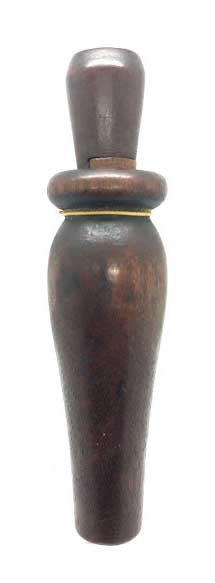
Duck Call - Unusual Shape
There is only one example of a Beckhart box that he had made for his calls to go in - the boxes with “J.T. Beckhart, Hornersville, Missouri” on one side and “The Famous Big Lake Duck Call” on the other side. Although Beckhart lived in Arkansas, Hornersville, just across the state line, was the closest town that he could use for a mailing address.
At some point, Beckhart fashioned a few very fancy duck calls that some speculate were for his children. A total of three were thought to be made but only two have surfaced as of date. The panels on each consist of a mixture of checkering patterns, a carving of a model 1897 shotgun, a dog pointing to a pheasant, a pair of ducks, a fish and an alligator. A cottonmouth snake coils around the stoppers of each call.
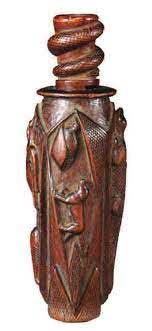
Duck Call that sold for
$103,500 in 2011.
Call is NOT mine but I
wish it was!
In 2011 at the Midwest Decoy Collectors Sporting show, an older couple walked in to have a duck call appraised. I was lucky enough to be standing there as several of us gawked over the call. It was one of Beckhart’s highly carved calls. The owner of the call inherited from her father, Joseph Nathaniel Whitley, who was a game warden and supervisor of commercial fisheries for the Arkansas Game & Fish Commission in 1919. The owner of the call consigned it to Guyette and Deeter auction company for them to sell in their July 2011 auction in Portsmouth, New Hampshire. After all the smoke cleared, the call brought $103,500 setting a record price for a duck call.
Mr. Beckhart passed away from a stroke on November 11, 1922 but his legacy as a call maker lives on. Examples of his calls are cherished and highly sought after by collectors, making them very valuable. For this reason, there are a number of calls out there that are incorrectly attributed to Beckhart along with some poorly made replicas that even have the “J.T. Beckhart” stamp in the collar.
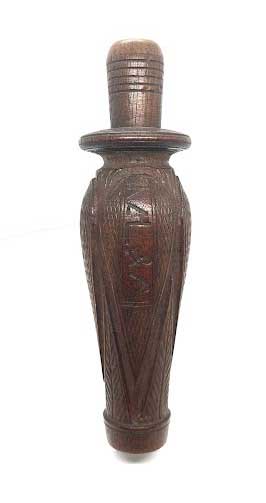
Francis River Model Checkered Duck
Call attributed to J.T. Beckhart
After his death, Claude Stone, a legendary call maker from Hornersville bought Beckhart’s call making equipment and materials from his widow. It is speculated that Stone was likely helping Beckhart make calls in his later years and carried on Beckhart’s legacy after he passed.
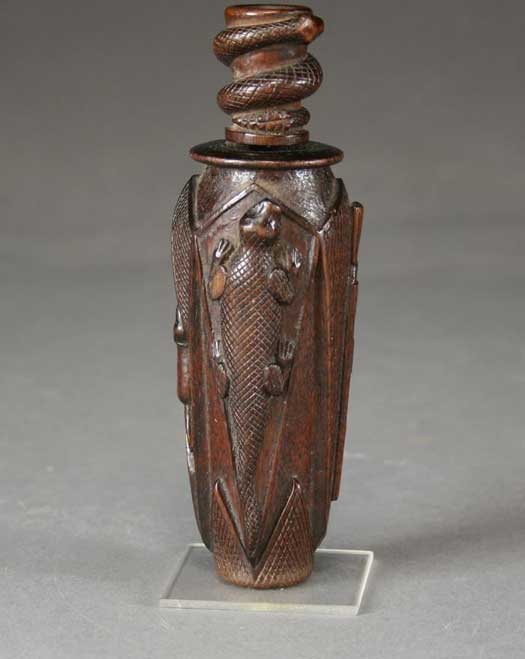
You can see examples of Beckhart calls from my collection that are pictures below on display at the Ducks Unlimited Heritage Center in Memphis, Tennessee inside the Bass Pro Shops Pyramid until September 2022. I can be reached at rkegraves@gmail.com and @rkegraves on Instagram.
Learn about other vintage duck call makers:
















